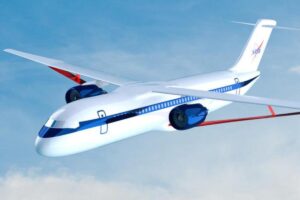SERIAL to ARINC429 Conversion: Optimizing Avionics Data
Introduction
Modern avionics systems rely on the seamless and reliable transfer of data among various subsystems to ensure safe and efficient aircraft operation. As legacy and modern equipment continue to coexist, the ability to convert data protocols becomes essential. One critical example is converting SERIAL communications (RS-232, RS-422, RS-485) into ARINC429 format, a widely adopted standard in the aviation industry for data exchange.
This white paper explores the mechanisms, benefits, and challenges of SERIAL to ARINC429 conversion, highlights the technologies involved, and discusses implementation strategies for optimized data communication in avionics environments.
1. Understanding Avionics Communication Standards
1.1 The Role of Data Buses in Avionics
Avionics systems consist of a network of interconnected electronic devices. Each subsystem, whether it’s for navigation, engine monitoring, flight control, or communication, requires continuous data exchange. To facilitate this, standardized data buses are employed.
1.2 Overview of SERIAL Protocols
SERIAL communication protocols such as RS-232, RS-422, and RS-485 are time-tested methods used to transfer data between devices.
-
RS-232 is a point-to-point protocol ideal for short-distance, low-speed communication.
-
RS-422 supports higher data rates and longer distances by using differential signaling.
-
RS-485 allows for multipoint systems, supporting communication among multiple devices on the same bus.
These protocols are often found in legacy systems or ground support equipment.
1.3 Overview of ARINC429
ARINC429 is a unidirectional data bus standard developed by Aeronautical Radio, Inc. It is the dominant protocol in commercial aircraft for transmitting avionics data.
-
Data Format: 32-bit word with fields for label, SDI, data, SSM, and parity.
-
Transmission: Uses twisted-pair cables for differential signaling.
-
Speed: Common data rates include 12.5 kbps (low speed) and 100 kbps (high speed).
-
Reliability: Includes built-in error checking via parity.
The predictability and robustness of ARINC429 make it ideal for mission-critical systems in aviation.
2. The Need for SERIAL to ARINC429 Conversion
2.1 Coexistence of Legacy and Modern Systems
Many aircraft, especially those in military or commercial use for extended periods, still utilize legacy systems operating on SERIAL interfaces. Newer systems, however, are designed around ARINC429 or more advanced protocols. Converters bridge this gap, ensuring communication between disparate technologies.
2.2 Use Cases in the Field
-
Flight Data Monitoring: SERIAL-enabled sensors must communicate with ARINC429 flight data recorders.
-
Maintenance Terminals: Ground-based RS-232 maintenance tools need to interface with ARINC429-equipped systems.
-
System Upgrades: When replacing older equipment, converters allow reuse of existing SERIAL-based devices without full system overhauls.
3. Key Features of SERIAL to ARINC429 Converters
3.1 Protocol Translation
The primary function of a converter is to map SERIAL data into the ARINC429 word structure. This includes:
-
Parsing ASCII or binary SERIAL input
-
Repackaging into ARINC429 word format
-
Assigning appropriate labels, SDIs, and SSMs
-
Calculating parity
3.2 Real-Time Data Handling
Aviation systems demand real-time or near real-time communication. Converters must process and transmit data with minimal latency to maintain operational synchronicity.
3.3 Configurability
Advanced converters offer configuration options such as:
-
Baud rate selection
-
Custom label assignment
-
Word repetition rate
-
Data field formatting
These features make integration into complex systems flexible and efficient.
3.4 Electrical Isolation
Isolation protects sensitive avionics equipment from voltage spikes and electromagnetic interference, critical for maintaining system integrity.
4. Architectural Considerations
4.1 Hardware-Based Conversion
Dedicated hardware devices offer robust and deterministic conversion. These are typically ruggedized for aerospace environments and feature:
-
MIL-STD-810 compliance for shock and vibration
-
Conformal coatings for humidity resistance
-
EMI shielding
4.2 Software-Based Conversion
Software solutions, often running on embedded systems or PCs, allow greater flexibility and programmability. However, they may introduce additional latency and require certification.
4.3 Embedded Versus Standalone Solutions
-
Embedded Converters are integrated directly into avionics subsystems.
-
Standalone Units act as interface devices, ideal for test setups or portable maintenance tools.
5. Integration in Avionics Systems
5.1 Mapping Data Structures
Mapping SERIAL data to ARINC429 requires careful planning. It involves:
-
Selecting ARINC429 labels that represent equivalent SERIAL data types.
-
Managing endian-ness and data scaling.
-
Synchronizing timing to avoid data overlap.
5.2 Certification and Compliance
Avionics systems must meet stringent certification requirements, including DO-160, DO-178, and DO-254. Any converter integrated into the data path must be part of the certification process.
5.3 System Validation and Testing
Testing is critical to verify:
-
Accurate data translation
-
Proper timing and synchronization
-
Electrical compatibility
Tools such as protocol analyzers and data recorders play a vital role in validation.
6. Benefits of SERIAL to ARINC429 Conversion
6.1 Extending Equipment Lifespan
Converters allow continued use of proven SERIAL devices, preserving investment and reducing costs.
6.2 Facilitating Interoperability
They enable communication between new and old systems, promoting modular upgrades without full system replacement.
6.3 Supporting Maintenance Operations
Ground support equipment often uses SERIAL interfaces. Conversion allows seamless connection to ARINC429 avionics for diagnostics and firmware updates.
7. Common Challenges and Solutions
7.1 Timing Mismatches
Issue: SERIAL interfaces often use asynchronous timing, while ARINC429 is periodic.
Solution: Buffering and data rate matching techniques help align timing.
7.2 Data Formatting Conflicts
Issue: Data word lengths and formatting differ between protocols.
Solution: Configuration software allows format customization, ensuring consistency.
7.3 Environmental Constraints
Issue: Converters may face harsh conditions.
Solution: Ruggedized enclosures and MIL-grade components ensure reliable operation.
8. Case Studies
8.1 Commercial Aircraft Retrofit
A major airline retrofitted cockpit panels with modern displays. The new ARINC429 displays had to receive data from legacy fuel sensors outputting RS-232. A custom SERIAL to ARINC429 converter enabled seamless integration, saving over $500,000 in system overhaul costs.
8.2 Military Avionics Upgrade
An air force sought to digitize flight data from aging trainers. Original RS-485 interfaces needed to link to modern ARINC429-based mission recorders. Ruggedized converters allowed successful deployment, improving data fidelity without disrupting training schedules.
8.3 Flight Test Instrumentation
Flight test engineers required temporary instrumentation using RS-422 sensors to monitor aircraft parameters. A portable ARINC429 conversion unit enabled integration into the onboard ARINC429 network, facilitating data collection without permanent modifications.
9. Emerging Trends
9.1 Miniaturization
Smaller, more efficient converters are enabling integration into constrained spaces, such as UAVs and compact avionics bays.
9.2 AI-Assisted Protocol Mapping
Future converters may use AI to intelligently map data formats and predict optimal configurations based on operational context.
9.3 Cybersecurity Features
As avionics systems become more interconnected, secure conversion devices with encryption and access controls are emerging to safeguard data.
10. Standards and Specifications
10.1 ARINC429 Word Structure
-
Bits 1-8: Label
-
Bits 9-10: SDI (Source/Destination Identifier)
-
Bits 11-29: Data
-
Bits 30-31: SSM (Sign/Status Matrix)
-
Bit 32: Parity (Odd)
Understanding this structure is crucial for accurate translation from SERIAL data.
10.2 Electrical Characteristics
-
Voltage Levels: ±10V to ±12V differential
-
Impedance: Typically 78 ohms
-
Data Rates: 12.5 kbps or 100 kbps
10.3 Relevant MIL and FAA Standards
-
MIL-STD-461: Electromagnetic compatibility
-
MIL-STD-704: Power specifications
-
DO-160G: Environmental conditions and test procedures
-
DO-178C / DO-254: Software and hardware assurance
Compliance ensures interoperability and airworthiness certification.
11. Vendor Landscape
Multiple vendors offer SERIAL to ARINC429 conversion solutions, each catering to specific market needs:
| Vendor | Notable Features | Application |
|---|---|---|
| Abaco Systems | High-speed, configurable units | Embedded systems |
| Alta Data Technologies | Low-latency, compact designs | Flight test & retrofits |
| Ballard Technology | MIL-grade, rugged units | Military avionics |
| Techaya | Integrated with switch functionality | UAVs and mobile platforms |
Selecting a vendor involves evaluating performance, configurability, ruggedness, and certification support.
12. Designing a Custom Converter
12.1 Microcontroller or FPGA Base
FPGAs allow parallel processing and precise timing control, ideal for ARINC429. Microcontrollers offer ease of programming for less complex applications.
12.2 Interface Circuits
-
Level Shifters: Match voltage levels between SERIAL and ARINC429.
-
Isolation Circuits: Use opto-isolators or transformers.
-
Buffers: Manage data flow and timing.
12.3 Firmware Considerations
-
Efficient interrupt handling
-
Circular buffers for data integrity
-
Checksum and parity calculation
-
Configurable parameters via GUI or DIP switches
13. Maintenance and Troubleshooting
13.1 Monitoring Tools
Devices should support:
-
Status LEDs
-
Diagnostic outputs
-
Data capture logs
13.2 Fault Isolation
Built-in self-tests (BIT) and watchdog timers can identify hardware or software faults quickly.
13.3 Firmware Updates
Field-upgradable firmware allows for quick fixes and feature enhancements without hardware changes.
14. Future-Proofing Strategies
14.1 Multi-Protocol Support
Future converters will support not just ARINC429, but also ARINC664, CAN (ARINC825), and Ethernet-based protocols, ensuring scalability.
14.2 Modular Design
Swappable I/O cards or firmware-selectable modes allow one hardware platform to support multiple use cases.
14.3 Integration with Digital Twins
Real-time data conversion systems will feed aircraft digital twins for advanced diagnostics, simulation, and predictive maintenance.
15. Conclusion
SERIAL to ARINC429 conversion plays a pivotal role in ensuring interoperability, longevity, and operational efficiency within modern and legacy avionics systems. Whether supporting flight tests, retrofits, or system upgrades, these converters provide a practical bridge between diverse communication protocols. As aircraft systems evolve, the ability to seamlessly translate data across protocols will remain a cornerstone of effective avionics integration.
Organizations must consider data integrity, real-time performance, certification requirements, and environmental conditions when selecting or designing SERIAL to ARINC429 converters. With advancements in miniaturization, configurability, and intelligent mapping, these tools are poised to become even more indispensable in the future of avionics.





